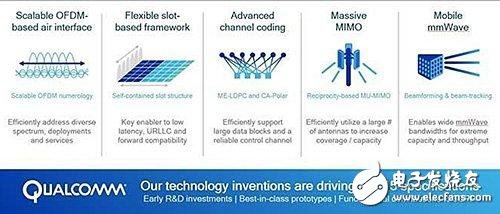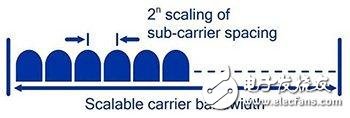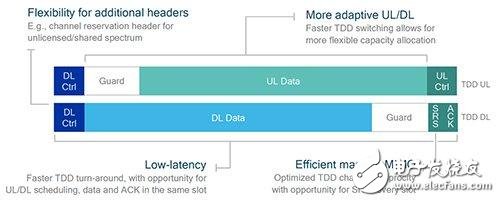Many changes and amazing innovations in the wireless technology arena have been seen, but nothing can be compared to the fundamental shift in the 5G mobile network. Over the past few years, chip vendors have continued to design a unified 5G new radio that will maximize the power and efficiency of mobile networks and devices.
As early as March 2016, 3GPP has already started the standardization of 5G new radio (5G NR). The main purpose of this is to develop a unified, more powerful wireless air interface. In mid-December 2017, at the 3GPP Plenary Session in Lisbon, Portugal, 3GPP successfully completed the first 5G NR specification, which is an important industry milestone on the road to 5G NR commercial deployment in 2019.
The first 5G NR specification not only supports the deployment of enhanced mobile broadband starting in 2019, but also lays the foundation for extending the 5G network to almost all industries, all objects, and all connections. So, which wireless technologies define the first 5G NR specification?
5G NR specification releases positive layout of chip vendors
5G NRs must meet the requirements of ever-expanding and extremely variable types of connections and deployments. 5G NR also needs to make full use of each spectrum, which has different spectrum usage supervision modes, distributed in different frequency bands, whether it is from the low frequency band below 1GHz, or to the 1GHz to 10GHz medium frequency band, and 24GHz called millimeter wave. Above the high frequency band. Therefore, no single technology can define 5G separately; instead, 5G will be built from a number of distinct technological innovations.
After the release of the 5G NR specification, chip vendors and telecom operators are also actively deploying this market. For example, Qualcomm has been developing 5G basic technologies for many years and inventing new 5G technologies to promote and even reshape the boundaries of wireless; to promote its advanced system design and wireless technology from theory to design and standardization. , implementation, and ultimately commercial processes to achieve the 5G vision (Figure 1).

Figure 1 5 wireless inventions defining 5G NR
Enhance subcarrier spacing with scalable OFDM parameter configuration
One of the most important decisions in the 5G NR design is the choice of wireless waveform and multiple access technology. While already evaluating and continuing to evaluate multiple approaches, Qualcomm has discovered through extensive research (in the Qualcomm Research report released in November 2015) that orthogonal frequency division multi-task (OFDM) systems, specifically Includes Cyclic Prefix Orthogonal Frequency Division Multiplexing (CP-OFDM) and Discrete Fourier Transform Spread Spectrum Orthogonal Frequency Division Multiplexing (DFT-S OFDM), which are correct for 5G Enhanced Mobile Broadband (eMBB) and many other scenarios. select.
Since OFDM is now in use, perhaps the industry will ask "Where is the next step in innovation?" A key innovation in 5G NR is the scalable OFDM multi-frequency parameter configuration (Figure 2). Today, LTE supports carrier bandwidths of up to 20 MHz, with the spacing between OFDMtones (commonly referred to as subcarriers) being almost a fixed 15 kHz.

Figure 2 scalable OFDM multi-carrier parameters
Therefore, in 5G NR, Qualcomm introduces a scalable OFDM parameter configuration to support multiple spectrum bands/types and deployment modes. For example, a 5G NR must be able to operate on a millimeter wave band with a larger channel width (eg, hundreds of MHz).
In addition, the 3GPP 5G NR Rel-15 specification will utilize a scalable OFDM parameter configuration that enables subcarrier spacing to be spread by 2 nth power with channel width. As a result, in a larger bandwidth system, the size of the FFT points is also expanded without increasing the complexity of the processing.
Self-contained time slot structure to implement elastic framework
Another key technology for 5G NR design is the flexible slot-based framework to enable telecom operators to efficiently reuse conceived (and unpredictable) 5G services on the same frequency. The key technical invention to achieve this flexible, resilient framework is the 5G NR self-contained time slot structure.
In the new self-contained slot structure (taking TDD in Figure 3 as an example), each 5G NR transmission is modular, with independent decoding capabilities, avoiding static timing relationships across time slots. By limiting the transmission in both the time and frequency domains, this flexible design simplifies the addition of new 5G NR features/services in the future, which is better backward compatibility than previous generations of mobile communications.

Figure 3 5G NR TDD self-contained slot structure advantages
Thanks to the upload/download (UL/DL) fast conversion and scalable time slot length, for example, the subcarrier spacing is 30 kHz, the time slot length is 500 μs, and the subcarrier spacing is 120 kHz, the time slot length is 125 μs, compared with LTE. The 5G NR self-contained time slot structure also brings significantly lower latency.
Easy Electronic Technology Co.,Ltd , https://www.yxpcelectronicgroups.com